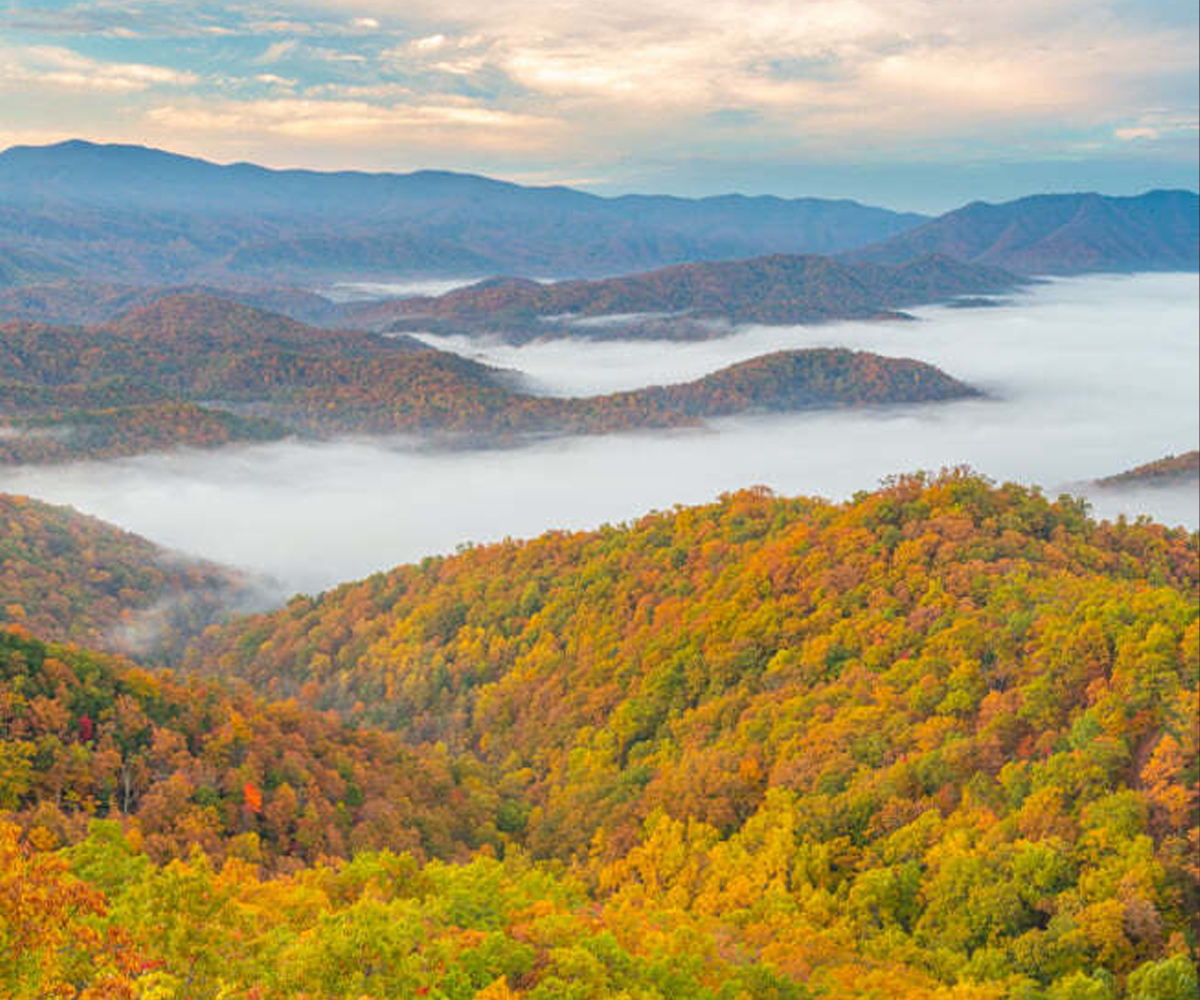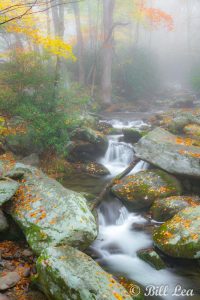

The beauty of Great Smoky Mountains National Park isn’t always easily translated to photography. Even experts in the art often agree, such as the late Ansel Adams, an internationally famous landscape photographer—particularly for his stunning images of Yosemite National Park. Adams once visited the Smokies, and, in a letter from October 9, 1948, he wrote, “The Smokys [sic] are OK in their way, but they are going to be devilish hard to photograph.”
This from a professional who knew the ins and outs of cameras, natural light, and the most dynamic ways to present landscape on film. Many of his Yosemite landscape photos define the genre.
Bill Lea, who has been photographing the Smokies for almost 50 years and has compiled his work in several books, agrees with Adams.
“This is true, especially for photographers who have done landscapes in the West,” Lea said. “Here in the Smokies, it’s such a busy landscape. In the West, it’s easy to get a strong foreground subject and a strong background subject with not a lot in between that will interrupt the scene. Here, there’s so much vegetation, and it’s just so much more difficult.”
Lea makes the difficult look easy. His shots of places like Cades Cove and Cataloochee bring the landscapes to life on the printed page.
Professional photographers can sympathize with amateurs who shoot a lovely scene, only to find it does not look as striking on the screen of their camera or cellphone. As millions arrive in the Smokies for the fall color season and look to take home photos showing the brilliant hues that light the forest, a professional tip or two could help.
“One of the things with our forest here is that the light is so problematic,” Lea said. “You end up with such contrasting light on a sunny day. So, to get the best shots, you’re really limited to early morning, late evening, and my personal favorite, overcast and misty. I love to shoot in the forest on rainy, misty days. There are less people, there’s better color saturation, and your light is even.”

Lea’s favorite Smokies photos tend to include the very thing that prompted the Smokies’ name.
“The one thing I love is fog,” he said. “I’m always watching the evening before for what the low temperature is going to be and the dew point and the wind to see if I think there’s a good chance for fog. If there’s going to be fog, I’ll head to Cades Cove or Cataloochee or up high to take in the scene with the sea of fog and the mountain peaks coming up like islands out of an ocean.”
For amateur photographers looking for a memorable shot, Lea says knowing what to exclude from a scene is as important as knowing what to include.
“When people come to the Smokies, they’re taken in by the whole scene,” he said. “There’s a tendency to want to take in too much. They really should isolate the strong points of the landscape and compose around those and exclude what doesn’t add to the scene.”
Lea uses a Nikon camera, a tripod, and polarizing filters in his work, but he says cellphones—now generally the “camera” of choice for amateur photographers—also can produce vivid shots.
Whatever your instrument of choice, just know that even renowned photographers like Ansel Adams found it “devilish hard” to capture the true beauty of the Smokies. The most important decision you’ll make may well be deciding to get out and try in the first place.
Subscribe to get the latest posts sent to your email.
The Great Smokies Welcome Center is located on U.S. 321 in Townsend, TN, 2 miles from the west entrance to Great Smoky Mountains National Park. Visitors can get information about things to see and do in and around the national park and shop from a wide selection of books, gifts, and other Smokies merchandise. Daily, weekly, and annual parking tags for the national park are also available.